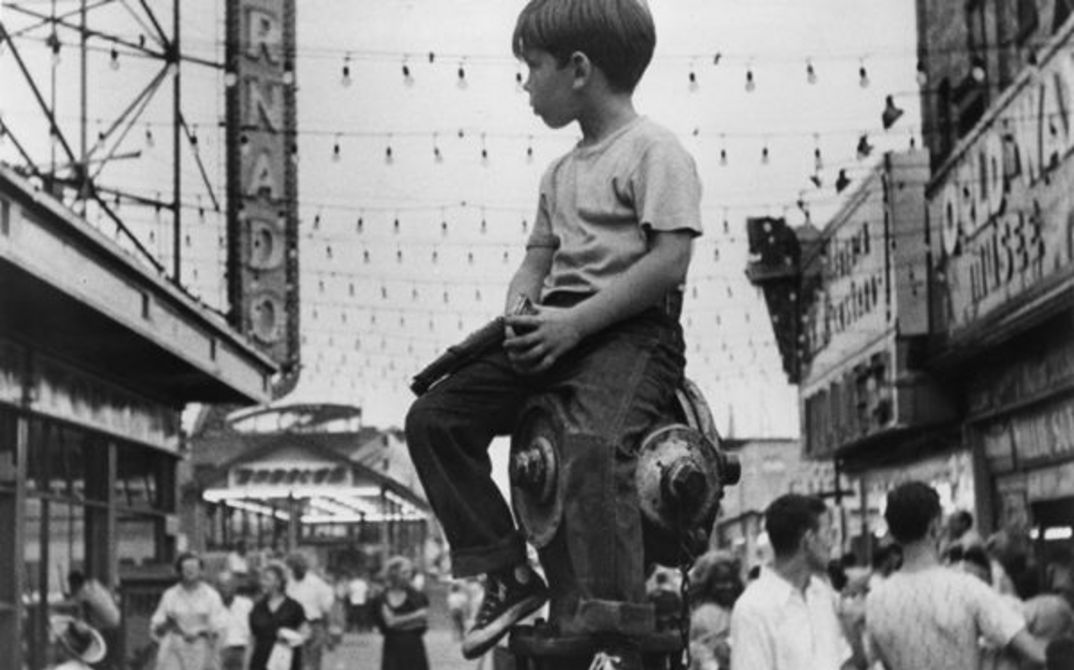BERLIN. DIE SINFONIE DER GROSSSTADT (Walter Ruttmann, Germany 1927, 1. & 12.7., with a live piano accompaniment by Eunice Martins) Images of the city, city life and people fan out at a furious pace in Ruttman’s film: urban canyons, trains, streets, crowds, machines, illuminated ad signs, evening entertainment spots - images edited together according to movement and contrast that merge into a visual rhythm.
PANELSTORY ANEB JAK SE RODÍ SÍDLISTE (Prefab Story, Vera Chytilová, Czechoslovakia 1979, 1. & 14.7.) A high-rise housing estate is being put up: while some inhabitants have already moved into their new apartments, construction work is still underway in other places, while real estate agents praise the new world of modern living. Chytilová captures noise, chaos, and human vice with a hugely dynamic camera and an eye for satire, located somewhere between slapstick and realism.
DO THE RIGHT THING (Spike Lee, USA 1988, 2. & 8.7.) At the start of the film, it's clear it's going to be a hot summer's day in Brooklyn; 15 hours and several heated exchanges later, the first line of dialogue - "Always do the right thing!" - is echoed in the firebombing that brings the film to an end. In between, a furious statement is made on the state of racism in America at the end of the 80s – a city symphony of a very different kind.
DER SCHÖNE TAG (Thomas Arslan, Germany 2001, 2. & 17.7.) Movements through a city - all day long, Deniz (Serpil Turhan) makes her way through summery Berlin. Deniz's wanderings serve to measure up the city and link together its different coordinates. Moving between her boyfriend, her mother, her sister, her place of work where she dubs films, auditions, and a chance encounter in the evening, Deniz tests her own expectations of life.
THE NAKED CITY (Jules Dassin, USA 1947, 3. & 13.7.) Concrete canyons, fire alarms, street scenes, newspaper boys, urban life in the oppressive summer heat – the legendary shots of this semi-documentary-like portrait of New York came about with the help of a truck with a reflective surface. The plot revolves around the murder of a young model but the vast city is an equally important protagonist.
TOUTE UNE NUIT (Chantal Akerman, Belgium/France 1982, 4. & 7.7.) A nocturnal symphony from the Belgian metropolis – a night of passions, of separating and getting back together, of hopes and disappointments. A circular dance of miniatures, a choreography of the gestures of desire and rejection. A film nearly without words, with only the sound of the streets audible.
SUITE HABANA (Fernando Pérez, Cuba 2003, 5. & 15.7.) A vision of Havana that does away the morbid sheen of bygone days and Cuba clichés entirely. Instead, Pérez shows 24 hours in the life of 10 completely different inhabitants of the city. Images and sounds merge into a poetic urban whole, into a melancholy suite that follows the course of a single day.
OH BOY (Jan Ole Gerster, Germany 2012, 6. & 21.7.) Niko, a university dropout, wanders aimless through Berlin. He may only be looking for a cup of coffee, but still makes the acquaintance of a wide range of different people and listens to stories and confessions that move back and forth between comedy and tragedy. A melancholy portrait of the city comes into view in muted black and white, peopled by drifters and those in search of something.
MY WINNIPEG (Guy Maddin, Canada 2007, 9. & 24.7.) "A multilayered journey through the hometown in his head, Guy Maddin's film is a vigorously capricious blend of fact and fiction." (Eddie Cockrell) Like all Maddin's films, this surreal, essayistic, and personal portrait of the director's hometown is impossible to categorize within one particular genre. The city of Winnipeg simultaneously becomes a place of dreams and the location of all our childhoods.
CYCLING THE FRAME (Cynthia Beatt, West Germany 1988) & THE INVISIBLE FRAME (Cynthia Beatt, Germany 2009, 16. & 28.7.) Two explorations of Berlin: Tilda Swinton cycled along the course of the Berlin Wall, first in summer 1988, not long before it came down, and then again two decades later. These two East to West tours produced two closely linked journeys of adventure, historical documents that take the pulse of a city, its inhabitants, its history in sound and image.
THE LITTLE FUGITIVE (Ray Ashley, Morris Engel, Ruth Orkin, USA 1953, 22. & 30.7.) This key American independent film shows the experiences of seven-year-old Joey, who runs away from home and spends a day and a night at Coney Island. Here he is absorbed completely by the world of amusements and moves effortlessly between the hot dog stands, the beach, and the pony stalls. UNDER THE BROOKLYN BRIDGE (Rudy Burckhardt, USA 1953, 22. & 30.7.) will be shown beforehand.
LOS ANGELES PLAYS ITSELF (Thom Andersen, USA 2003, 23.7.) A reconstruction of the history and geography of Los Angeles using hundreds of different excerpts of films shot in L.A. “Guided by the attentive, contemplative narration, Andersen puts together a critical history and counter-history of Los Angeles." (Sean Farnel).
City Symphony Short Film Program(25. & 29.7.): PARIS QUI DORT (René Clair, France 1923) A piece of surrealist fiction: the night watchman of the Eiffel Tour spends a day wandering through a Paris put to sleep. À PROPOS DE NICE (Jean Vigo, France 1930) A satirical, absurdist portrait of Nice. Vigo referred to his film as a "social documentary" and quotes classic city symbols in order to caricature Nice as city that shows little dynamism or modernity. PORTRAIT OF A CITY (Chidananda Dasgupta, India 1961) A documentary portrait of Calcutta. (mg)



